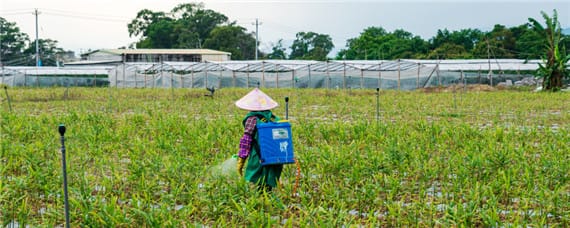Name: malathion
Synonyms: 1,2-bis(ethoxycarbonyl)ethyl O,O-dimethyl phosphorodithioate; diethyl (dimethoxyphosphinothioylthio)succinate; S-[1,2- DICARBETHOXYETHYL]-O,O-DIMETHYL-DITHIOPHOSPHATE; O,O-Dimethyl S-(1,2-dicarbethoxyethyl) dithiophosphate.
CAS No.: 121-75-5
EINECS No.: 204-497-7
Molecular formula: C10H19O6PS2
Molecular weight: 330.358
Malathion has good touch, stomach poisoning and certain fumigation effect, without endosmosis. When it enters the insect body, it is oxidized to malathion, which is more toxic, and when it enters the warm-blooded animals, it is hydrolyzed by the carboxylate enzyme which is not found in the insect body, and thus loses its toxicity. Malathion has low toxicity, short residual period, and is effective against chewing mouthparts of pests.
Melting point: 2.9-3.7℃
Boiling point: 156-159℃ (0.093kPa)
Relative density: 1.23
Vapor pressure: 5.3*10-5kpa(30℃)
Appearance: pure product is colorless or light yellow oily liquid with garlic odor; industrial product with dark brown color and strong odor.
Stability: Unstable, active below PH5.0, easy to hydrolyze and fail above PH7.0, decompose rapidly above PH12, also can promote its decomposition when it meets iron, aluminum and metal. Stable to light, but slightly less stable to heat. Isomerization will occur when heated at room temperature, and 90% of it will be converted to methylthioisomer when heated at 150℃ for 24 hours.
Hazard: Combustible in open flame and high heat. Reacts with strong oxidizing agents. Decompose by heat to prevent the production of phosphorus and sulfur oxide gas.
Toxicity: Low toxicity, acute oral LD50 for female rats is 1751.5mg/kg, acute oral LDso for male rats is 1 634.5mg7kg, acute percutaneous LD50 for rats is 4000~6 150mg/kg.
1. Control of wheat crop pests: Prevent and control stick insects, aphids, wheat leaf wasps, spray with 45% emulsifiable oil 1000 times.
2. Control of bean crop pests: Prevent and control soybean heartworm, soybean bridge builder, pea weevil, pea and tube aphid, yellow striped beetle, spray with 45% emulsifier 1000 times, 75 – 100 kg of liquid per mu.
3. Rice pest control: Prevention and treatment of rice leafhopper, rice lice.
4. Prevention and control of cotton pests: Prevent and control cotton leaf hopper and blind stink bug, spray with 45% emulsifier 1500 times.
5. Prevention and control of fruit tree pests: Prevent and treat various kinds of moths, nesting moths, pink moths and aphids on fruit trees by spraying with 45% emulsifier 1500 times.
6. Prevention and control of tea tree pests: Prevent and treat tea weevil, mealybug, mealybug and mealybug with 45% emulsifiable oil 500-800 times spray.
7. Prevention and control of vegetable pests: prevent and control vegetable weevil, vegetable aphid, yellow striped flea beetle, etc., spray with 45% emulsifiable oil 1000 times.
8. Control of forest pests: Prevent and control looper, pine caterpillar, poplar moth, etc. Use 150-200ml of 25% oil per mu, ultra-low volume spray.
9. Control of health pests: Flies with 45% emulsifier 250 times at 100 – 200 ml/m2. For stink bugs, use 45% emulsifier 160 times at 100-150 ml/m2. For cockroaches, use 45% emulsifier 250 times at 50 ml/m2.

Engineering controls: tightly enclose and provide adequate local exhaust and general ventilation.
Respiratory protection: Protective masks must be worn during production operations or agricultural use. Self-contained breathing apparatus must be worn in case of emergency rescue or escape.
Eye protection: Wear chemical safety glasses.
Body protection: Wear appropriate protective clothing.
Hand protection: Wear protective gloves.
Other: Smoking, eating and drinking are prohibited at industrial sites. After work, shower and change clothes. Do not take work clothes to non-working places, store toxic contaminated clothes separately and wash them before use. Pay attention to personal cleanliness and hygiene.
First aid measures: the patient should be removed from the contaminated area, placed at rest and kept warm; skin contamination immediately change clothes, apply soap and water to rinse; accidentally taken immediately with slightly alkaline liquid repeatedly wash the stomach, avoid taking milk, egg whites and oily food, antidote with detoxification drugs, atropine, and rush to hospital for treatment.
Leakage disposal: evacuate people in the contaminated area to a safe area, prohibit extraneous people from entering the contaminated area, and cut off the source of fire. Emergency personnel should wear gas masks and responsive work clothes. Plug the leak in a safe manner. Absorb with sand and soil or other non-combustible adsorbent mixture, then collect and transfer to safe place. It can also be flushed with a large amount of water, and the diluted flushing water is put into the wastewater system and discharged after harmless treatment to meet the standard. If a large number of leaks, build a dike to shelter, and then collect, transfer, recycle or dispose of after harmless treatment.
Fire-fighting methods: Fire extinguishing agents: fog water, foam, carbon dioxide, sand and soil.
Main use: It is non-invasive insecticide and acaricide. It is suitable for controlling a variety of chewing mouthparts of pests on rice, sorghum, vegetables, fruit trees and other crops.
Synthesize dimethyl dithiophosphate from diphosphorus pentasulfide and methanol, then add with diethyl maleate to get malathion. Put diethyl maleate (380kg by 100%) into 1000L glass-lined reaction pot and stir, control the temperature below 45℃, put 350kg phosphorus pentasulfide. Slowly add methanol dropwise, control the temperature at 48-55℃, and finish adding 250kg of methanol in about 2h. The reaction produces hydrogen sulfide and escaping methanol vapor, and the methanol is refluxed by the condenser, and the hydrogen sulfide is absorbed by alkali solution. The reaction is carried out under negative pressure. After the reaction is completed, it is cooled to 40-50°C and left to stratify to precipitate impurities. The upper layer of crude oil is successively washed with water, alkali and water, and then dehydrated in a vacuum dehydration pot, and the water in the crude oil is evaporated for 1.5-2h below 85℃ (vacuum 93.3kPa) to obtain Malathion crude oil. Raw material consumption quota: maleic anhydride 430kg/t, pentaerythritis 470kg/t, ethanol 420kg/t, methanol 390kg/t.
Esterification Diethyl maleate is produced from maleic acid (or anhydride) and ethanol under the catalysis of sulfuric acid. Benzene is used as solvent, and benzene, ethanol and water are used for azeotropic dehydration to facilitate the esterification reaction.
Synthesis O,O-dimethyldithiophosphoric acid (see the preparation of lego for details) was added with diethyl maleate to obtain malathion. the ratio of O,O-dimethyldithiophosphoric acid to diethyl maleate was 1:1.15, the reaction temperature was 55 ≤ 70°C, and the reaction time was about 7h.
